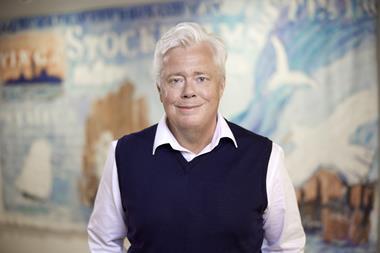To win an individual country or themed IPE Award for pension fund excellence sets you up as something of a benchmark. To walk away with overall Best European Pension Fund Award 2005, however, means you are defining your industry. There can be no doubt Denmark’s ATP fund won this highly prestigious award for the manner in which it recognises that excellence comes not only in defining its investments, pensions management structure and its overall objectives and risk tolerance, but in establishing and managing the interdependence of these three areas. And that is what sets ATP apart.
Since 2000, ATP has not been immune from the problems pension funds have faced in seeing their liabilities increase, as interest rates fall and people live longer. It has experienced volatility in its returns, like other funds. But unlike other funds, ATP took the bull by the horns and introduced a comprehensive new investment policy and pensions strategy based on the principles mentioned above. This was facilitated by the scheme’s existing strong focus on asset-liability modelling, which for some years has been done in-house.
The single most important decision it took was to hedge the interest rate risk against its liabilities in 2001. This was followed by a dynamic asset allocation strategy in 2003 which effectively linked the investment risks directly to the fund’s reserves and the risk constraints ATP’s board insists on.
Moving on, ATP has in the past year turned its sights to significant new areas of focus. Firstly, it has recognised the growing popularity of liability-driven investments in the pursuit of alpha and beta and hedging its liabilities independently. ATP says the rationale behind this move was the feeling it could provide better solutions to the problems facing pension funds in general, not just ATP, by shifting its emphasis away from the traditional investment approach focusing on high returns relative to benchmarks towards absolute risk/return strategies that cover the fund’s liabilities more efficiently.
But a pension scheme needs clearly defined objectives and ATP acknowledged this by committing itself to a portfolio whose investments generate the least possible risk for its clients, while hedging its liabilities as far as possible. This was the starting point ATP needed before shifting to a liability-driven model.
But some risk is inevitable if a fund is seeking to generate higher returns. Both beta and alpha are known for their additional return potential. ATP sees beta as the excess return generated by risk-free investments and alpha as the added-value from investment skill. ATP stipulates then that the risk budget it makes available for both alpha and beta depends largely on the level of its reserves, its investment objectives and the risk limits it sets itself.
The ever proactive ATP is keen to set new standards and rejects the “beta trumps alpha” approach. The fund places alpha, beta and risk-reducing in independent portfolios to be managed independently by dedicated teams. This is contrary to the most traditional way pension funds have used alpha and beta up to now, whereby the beta or asset class is selected and then it is decided whether or not to add value or alpha. ATP’s new approach adds flexibility and it believes it enables the fund to focus more on improving its risk management and accountability.
The innovation doesn’t stop there. If you can have liability-driven investments, why not investment-driven liabilities? This helps ensure liabilities are considered in the context of its investment strategy and risk parameters. A good first example of this approach is ATP’s new profit distribution strategy, which was implemented in 2005. ATP claims its profit distribution is setting new standards by ensuring the principles that determine bonus payments are fully consistent with the fund’s long-term investment strategy and dynamic asset allocation policy.
But setting new objectives and overhauling the way it seeks to generate returns are not possible without restructuring the fund’s administration and performance measurement. This led in 2004 to ATP bringing the asset managers, asset-liability modelling teams and actuaries under one roof, so to speak. Operating now under the same leadership, ATP believes the integration of its asset managers, asset liability analysts and actuaries was necessary to ensure the success of its new integral approach.
To accommodate the separation of alpha and beta, ATP has drafted a multi-team structure that reflects the independence of its beta, alpha and liability hedging operations. This also means ATP has maximised the focus of its asset managers and their accountability.
The net result has been very rewarding. Despite the steep increase in life expectancy, ATP has seen improvements to its funding ratio. In 2004, ATP’s investments returned almost 18.9%, or Dkr48bn, and it is well on the way to beating that figure in 2005, as the first half if this year has already seen returns of 14.5%, equivalent to Dkr44bn. More than half of the returns come from interest rate swaps from ATP hedging its liabilities.














No comments yet